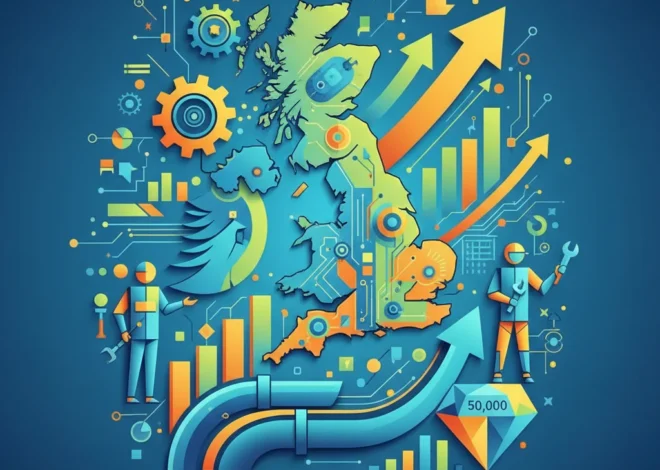
The Great Economic Card Trick: Are You Watching the Wrong Hand?
In the world of magic, the most effective illusions rely on a simple principle: misdirection. While the magician dazzles you with a flourish of their right hand, their left hand is quietly executing the trick. It’s a masterful manipulation of focus, designed to make you see what they want you to see, and ignore what’s truly happening. In a thought-provoking letter to the Financial Times, R Vijayaraghavan alludes to a similar phenomenon in the highest echelons of economic policy—an “Oval Office card trick.”
This analogy is more than just a clever metaphor; it’s a critical framework for understanding the complex interplay between government policy, central banking, and the financial markets we all participate in. We are often encouraged to watch one hand—the soaring stock market, the low headline unemployment rate—while the other hand is fundamentally reshaping the very foundations of our economy. This post will follow the logic of that card trick. We’ll deconstruct the illusion, examine the mechanics behind the sleight of hand, and reveal what it means for investors, business leaders, and anyone navigating today’s intricate financial landscape.
The Setup: The Dazzling Distraction of Asset Inflation
The first step in any good trick is to capture the audience’s attention. In the economic theater, the star performer is often the stock market. We see headlines celebrating the S&P 500 and Nasdaq reaching new all-time highs. We hear pronouncements of a resilient economy, bolstered by strong corporate earnings and seemingly robust consumer spending. This is the grand flourish—the magician’s right hand waving a silk handkerchief.
For years, this narrative has been incredibly powerful. Despite global pandemics, geopolitical turmoil, and supply chain disruptions, financial assets have, for the most part, continued their upward march. This has fueled a powerful psychological phenomenon among investors known as TINA, or “There Is No Alternative.” With interest rates on safe assets like government bonds hovering near historic lows for over a decade, many have felt compelled to pour capital into the stock market to seek any meaningful return. This influx of cash, in turn, pushes market valuations even higher, creating a self-reinforcing cycle of apparent prosperity.
The numbers seem to support the spectacle. For instance, between the end of the Great Financial Crisis in 2009 and the peak in late 2021, the S&P 500 delivered an annualized return of over 15% (source). This is the part of the show everyone loves to watch. But as with any illusion, the real action is happening elsewhere, away from the spotlight.
The Stealth Tax Squeeze: Why the UK's Shrinking CGT Threshold is a Bigger Deal Than You Think
The Sleight of Hand: The Unseen Engine of Liquidity
So, what is the magician’s left hand doing while we’re mesmerized by the stock market ticker? It’s operating the machinery of modern monetary and fiscal policy, an engine that has injected unprecedented levels of liquidity into the global financial system.
This process, primarily known as Quantitative Easing (QE), involves central banks, like the U.S. Federal Reserve, creating digital money to buy financial assets (mostly government bonds) from commercial banks. The stated goals are to lower long-term interest rates, encourage lending, and stimulate economic activity. Since the 2008 financial crisis, and again in response to the COVID-19 pandemic, this tool has been used on a massive scale. The Federal Reserve’s balance sheet, a rough proxy for the scale of this intervention, exploded from less than $1 trillion before 2008 to nearly $9 trillion by 2022 (source).
This immense creation of new money is the secret to the trick. While some of it supports the “real” economy, a disproportionate amount flows into financial markets. It’s like pumping helium into a balloon; the balloon (asset prices) expands, but the air around it (the real economy of goods and services) doesn’t necessarily become more substantial. This creates a critical divergence between the performance of the stock market and the underlying health of the economy.
The following table illustrates this divergence by comparing the growth of the U.S. M2 money supply (a broad measure of money in the economy) with the growth of real GDP and the S&P 500 over a recent period. It highlights how the financial economy has outpaced the real economy.
| Metric | Approx. Growth (2019-2022) | Description |
|---|---|---|
| U.S. M2 Money Supply | ~40% | Represents the massive injection of liquidity by the central bank and government. |
| S&P 500 Index | ~48% | Shows the performance of the financial markets, which directly benefited from the liquidity. |
| U.S. Real GDP | ~5.5% | Indicates the much slower growth of the actual production of goods and services in the economy. |
As the data shows, the expansion of the money supply correlated far more closely with the stock market’s rise than with the growth of the real economy. This isn’t a coincidence; it’s the mechanism of the trick itself.
The Prestige: Unmasking the Consequences
The final act of a magic trick is “The Prestige,” where the ordinary is made extraordinary. In our economic analogy, this is where the long-term consequences of the sleight of hand become apparent, and they are not always magical.
1. The Inflationary Hangover: The most direct consequence has been a surge in inflation. When the supply of money grows much faster than the supply of goods and services, prices inevitably rise. While initially dismissed as “transitory,” this inflation has proven sticky, eroding the purchasing power of wages and savings. According to the Bureau of Labor Statistics, the Consumer Price Index (CPI) saw its sharpest increases in four decades during 2021 and 2022 (source), acting as a regressive tax on those who can least afford it.
2. Widening Wealth Inequality: Since the liquidity firehose was aimed primarily at financial markets, those who owned assets—stocks, real estate, private equity—saw their wealth skyrocket. Meanwhile, those who rely on a paycheck saw their wages struggle to keep pace with the rising cost of living. This has exacerbated the wealth gap, creating social and economic friction.
3. The Rise of Alternative Finance: The “card trick” has fueled deep-seated distrust in the traditional financial system. This sentiment has been a major catalyst for the growth of fintech, particularly in areas like blockchain and decentralized finance (DeFi). Cryptocurrencies and other digital assets are, in many ways, a philosophical and technological vote of no confidence in the perpetual money-printing capabilities of central banking.
Beyond the Gigafactories: Africa's Real Battery Revolution is in the Home
Seeing Through the Illusion: A Playbook for the Modern Investor
Understanding the trick is the first step; the next is learning how to navigate the reality it has created. Simply opting out is not an option for most. Instead, investors and business leaders must adapt their strategies to account for the distorted landscape.
- Focus on Real Value and Cash Flow: In an environment inflated by cheap money, speculative, unprofitable companies can see their valuations soar. The smart investor, however, will look past the hype. Focus on businesses with strong balance sheets, durable competitive advantages (a “moat”), real pricing power to combat inflation, and a consistent ability to generate free cash flow.
- Diversify Beyond the Traditional: If the core of the trick is the debasement of fiat currency, then true diversification means looking at assets that can hold their value. This includes not just a global mix of equities and bonds, but also real assets like real estate, infrastructure, and commodities.
- Understand the Macro Levers: It’s no longer enough to be a good stock-picker. Today, every investor must also be a student of macroeconomics. Understanding the decisions of the Federal Reserve, the dynamics of interest rates, and the flow of global capital is paramount to effective risk management and identifying opportunities.
- Embrace Volatility: The process of unwinding this decade-long policy experiment will not be smooth. Markets will likely experience higher volatility. A disciplined approach to trading and investing, with a clear-headed assessment of risk, is more important than ever.
Fueling the Engine: Why a Strong Economy is Britain's Only Answer to the Worklessness Crisis
The “Oval Office card trick” isn’t about a conspiracy; it’s about the unintended consequences of policies designed to solve one crisis that inadvertently sowed the seeds for the next. The illusion of a stock market detached from economic gravity was maintained by an unprecedented wave of liquidity. As that tide goes out, we are left to discover what is truly standing on solid ground.
The key takeaway is not to be cynical, but to be clear-eyed. By understanding the mechanics behind the curtain—the interplay of fiscal stimulus, central banking, and financial technology—we can stop being a passive audience to the magic show. We can become discerning participants, able to distinguish between genuine economic strength and a masterful, but temporary, illusion.


